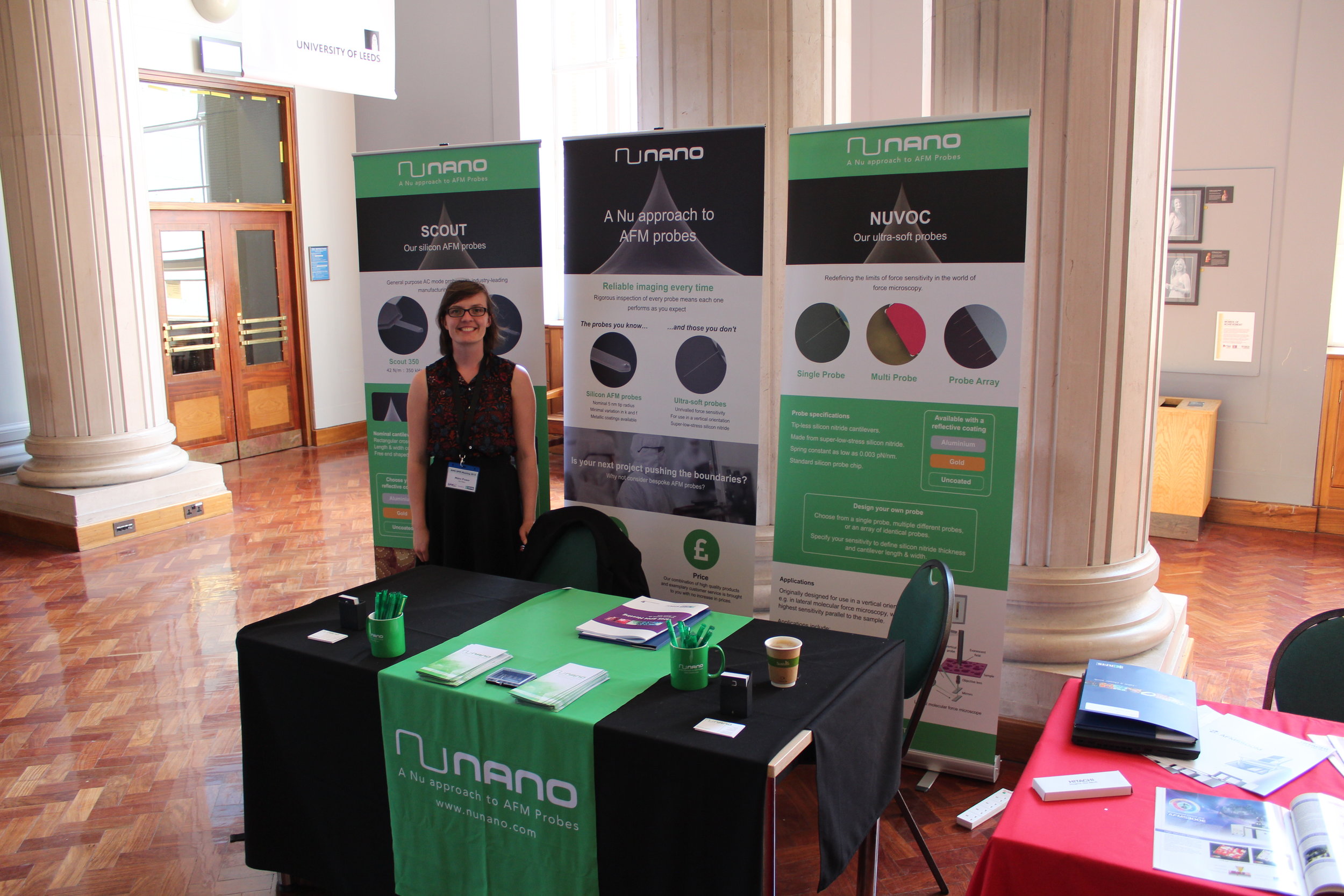James and I attended the Royal Microscopical Society scanning probe microscopy (RMS SPM) meeting last month in lovely Leeds, marking NuNano’s first experience as an exhibitor.
I had attended conferences before as a PhD student, usually presenting a talk or poster on my research but I knew this was going to be different. I was now representing a company and rather than justifying my research, I had to get people excited about NuNano. Thankfully, I didn’t feel that impending doom of having to present my work to a large audience or that someone would ask me a difficult question about my research that I wouldn’t be able to answer promptly!
As I settled into the four-hour train ride from Bristol to Leeds, I found myself wondering how different the experience was going to be as a company representative compared to as a PhD student. In conversations, would the attendees just think I was trying to push a sale? Would anyone visit our exhibition stand? James and I thought back to when we were PhD students and how neither of us were particularly drawn to the exhibition halls.
On reflection, I can say that attending the RMS SPM meeting was a very valuable experience. I learnt a great deal from the conversations I had with attendees and the various observations I made over the two days of the conference.
I’d like to share with you three key messages that I took back to the office, which I just wouldn’t have acquired via email exchanges with potential or established customers. It is certainly the face-to-face interactions that allow you to gain the most insight.
1) The use of SPM in UK-based biological research is big right now
Many of the talks and posters presented at the RMS SPM meeting were concerned with the application of SPM techniques to the study of biological samples. The research presented included imaging of DNA, bacterial cell walls, and model bio-membranes using high resolution atomic force microscopy (AFM).
Silicon-nitride-based probes, which have a low spring constant, are often used to image these biological specimens because these samples are soft, prone to damage, and are usually kept in biological buffers. Attending the conference as well as our product survey back in February has allowed us to see the high demand for silicon nitride probes among SPM researchers. Thus, we will be developing these probes in the near future.
2) SPM researchers are often involved in multidisciplinary projects
SPM is inherently a multidisciplinary technique because physics explains the probe-sample interactions and samples that can be studied are diverse, ranging from metals to single cells.
Many of the PhD students that I chatted to at the conference had a physics background and were delving into the world of biology. They told me of the steep learning curve at the beginning that comes with learning a new area of science and how they have noticed that biologists and physicists approach experimental work differently. It really brought me back to my transition from an undergraduate in chemistry to a PhD in physics.
3) AFM users value high quality and affordable AFM probes
“Have you ever come across duds in AFM probe packs?” was a question I asked many delegates at the conference. Most of them did respond affirmatively, expressing their frustration.
When I told them about NuNano’s commitment to inspecting every single probe before it is shipped, with no increase in prices, many were surprised and quite interested. This showed me that high quality and affordability is an important consideration when AFM users choose their AFM probe supplier.
The conference has taught me that allowing face-to-face conversations to happen between academics and industry representatives at events such as the RMS SPM meeting is so important for both parties.
We have also seen the value of this through James getting on the road and visiting AFM users at their universities, which you can read about in our blog post next month.
Our first venture into the world of exhibiting has been fruitful and we look forward to attending the next big SPM conference, Scanning Probe Microscopy on Soft and Polymeric Materials (SPMonSPM) in August. See you there!
If you liked this blog post you may also like What were the top four talks at ISPM 2018? (As recommended by Mervyn Miles….) and Why conferences are essential for academics AND entrepreneurs



